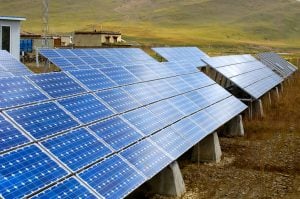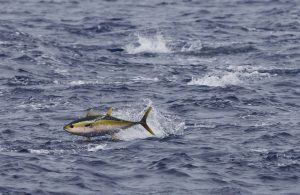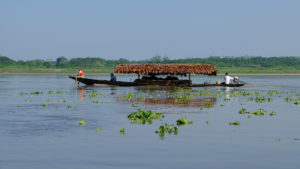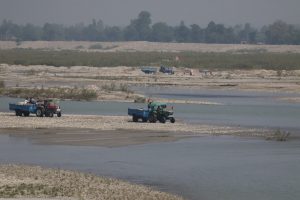Artificial hatcheries have started producing crabs for the first time in Bangladesh. This is seen as a successful step for making local fisher communities financially solvent, by having crab farms, and avoiding the risk inherent in fishing at sea or rivers.
This takes on additional significance because the government has taken tough measures to ban fishing for certain periods to preserve stock. Most crab farmers live in coastal regions where the ban has a serious impact on their means of livelihood.
In the coastal areas there has been a rapid decline in naturally available crabs due to overexploitation.
Another serious issue is the intrusion of sea water. A large number of water bodies in Bangladesh’s coastal areas have turned extremely saline causing the extinction of multiple fish species. Prawn cultivation, too, has been affected, by a virus possibly exacerbated by extreme salinity. So far, only crabs have been able to successfully adapt to these changes.
![A crab farm with juvenile crab in the ponds [image by: Banani Mallick]](https://dialogue.earth/content/uploads/2020/01/Crablets2.jpg)
Following this logic, some experts are recommending a government-supported effort to push the farming of crabs as an adaptation measure to climate change, as well as a livelihood supplement mechanism. This could also help balance out the ecosystem of south western coastal Bangladesh, from where the booming soft-shelled crab industry is exporting crabs to Japan, China and Indonesia. This is threatening the survival of natural born crabs in many parts of Sundarbans areas like Datnakhali and Gabura in Sathkhira district under Shamnagor thana.
The farming of crabs could offset this decline.
Read: Japanese appetite drives crab farming in the Sundarbans
Talking to thethirdpole.net, Paval Partha, a researcher of ecology-biodiversity and conservation of Bangladesh, said, “The soft-shelled crab industry will destroy the crab species in Sundarbans. Hard shelled crabs have the ability to lay eggs but soft cell crabs are only for eating. If [the transformation of soft-shelled crabs into hard-shell ones is interrupted] the breeding process will be stopped and our marine eco-system will be seriously imbalanced.”
![A crab farmer about to collect crabs [image by: Banani Mallick]](https://dialogue.earth/content/uploads/2020/01/Crablets4.jpg)
COAST Trust, a national non-government organisation, has established the crab hatchery in Cox’s Bazar with the technical and financial support of the Palli Karma Sahayak Foundation (PKSF). Md. Moshararaf, the assistant general manager of PKSF said that the crab hatchery programme has been undertaken at the entrepreneurial level to create opportunities on a large scale to create income and employment opportunities targeting to the local people.
Mizan Rahman, senior coordinator of crab project, told thethirdpole.net that at first they had collected about 30 mother crabs from Maheshkhali River Island eight months ago. They nurtured these crabs for 42 days in the mother unit of hatchery until they had laid their eggs in their abdominal sacs.
The eggs hatched after 32 days. Approximately 1,000 juvenile crabs survived. The lack of sufficient electricity, inadequate salt content in the water, and the unavailability of medicine and food for eggs are main reasons for not being able to hatch more crabs.
![Md Selim, an exporter, is processing a fully grown crab [image by: Banani Mallick]](https://dialogue.earth/content/uploads/2020/01/Crablets3.jpg)
The ideal salinity level for crab hatching is 28-30 parts per thousand (PPT) but the water from Maheskhali Island River has a salinity level of around 24 ppt, causing significant mortality of eggs, he added. In the time from January to June the salinity level rises, so crab hatcheries may work better then.
In the coastal areas there has been a rapid decline in naturally available crabs due to overexploitation. “The local fishing communities have caught fish and crabs without any rest since last ten years, and the number drastically fallen,” said Sudhamoy Manjhi, an elderly fisherman, from Sathhira district.
At the same time new disease strains, and unethical practices have damaged Bangladesh’s prawn exports. At this point of time only crab production due to the huge demand in the international market, can help, said Jakia Rahman, a scientific officer at the Bangladesh Fisheries Research Institute based in Cox’s Bazar.
Read: Bangladesh struggles with adulterated shrimp
“We need to train up our local farmers and create access for medicines and feed,” she said.
![Crabs being raised in boxes [image by: Banani Mallick]](https://dialogue.earth/content/uploads/2020/01/Crablets5.jpg)
At present the sale price of a crab BDT 600-700 (USD 7.07-8.25) per kilogramme, but this can climb as high as BDT 1,500- 2,000 (USD 17.67-23.56) in April due to demand from China, where a major festival takes place then.
Words of caution
Not everybody is convinced that crab hatcheries are the way to go. Ishtiaq Uddin Ahmed, a leading forest and nature expert, said that the country has not conducted any research assessment yet if crab hatcheries would cause any long-term negative environmental impact.
“We need some time to understand the impact of crab’s farming,” he said. But he also noted that the crab hatcheries are being put up on agricultural land of coastal area which is ultimately increasing saline salt concentration in future.
“This agricultural land currently being used for crab farming will gradually turn into barren land like many others land. There will be no future expectation of growing agricultural products such as rice or vegetables,” said Ahmed, former country representative of International Union for Conservation of Nature (IUCN)
Asked what steps should be taken, he said there should be a specific land zoning system in the coastal area for commercial crab farms, shrimp farms and agricultural production.
Sheikh Rokon, Secretary General, Riverine People (A Dhaka based civil society organization dedicated to river, wetlands and water issues) said that, crab farming has two adverse impacts on coastal riverine environment.
Firstly, crab farmers catch a huge amount of juvenile crabs and other small aquatic creatures from the natural mangrove eco system as food the hatching crabs. This destroys the food cycles of other species.
“This collection puts intense pressure on the natural sources of crab population and affects the entire eco system,” he said.
Secondly, the water in the farm where crabs are being raised is often brackish untreated and polluted water. This is being dumped into natural water bodies either by digging holes through the embankment or through pipes, posing a serious threat to the environment and to the health of the coastal communities.
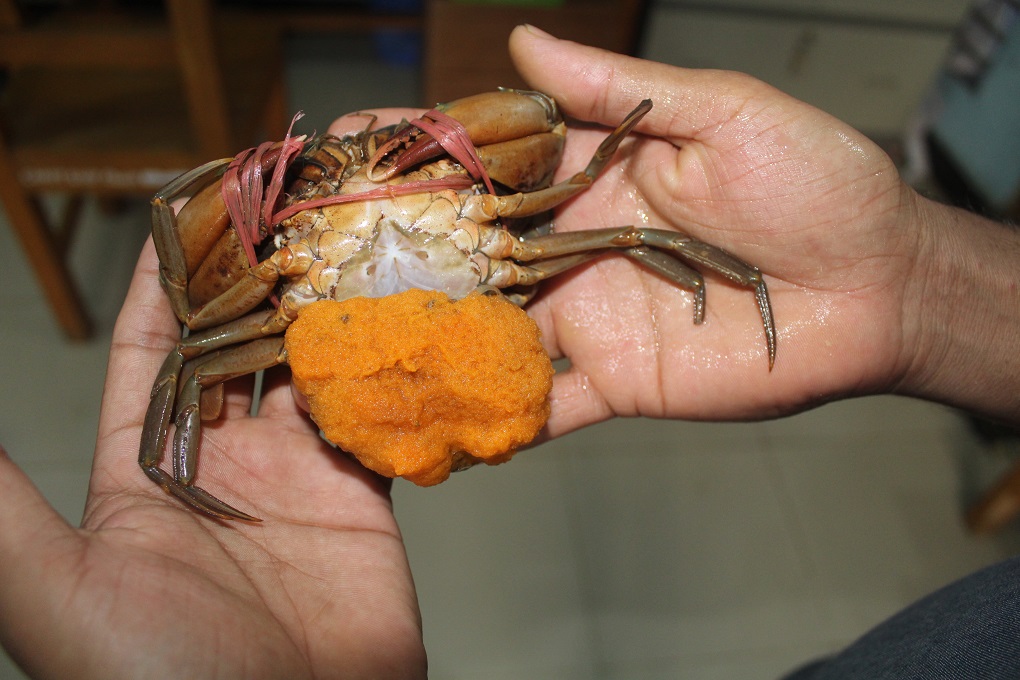
![A farmer creates noise using pots and pans to 'scare off' locusts swarms [image by: Sirajuddin]](https://dialogue.earth/content/uploads/2020/02/IMG_5294_cropped-300x202.jpg)
